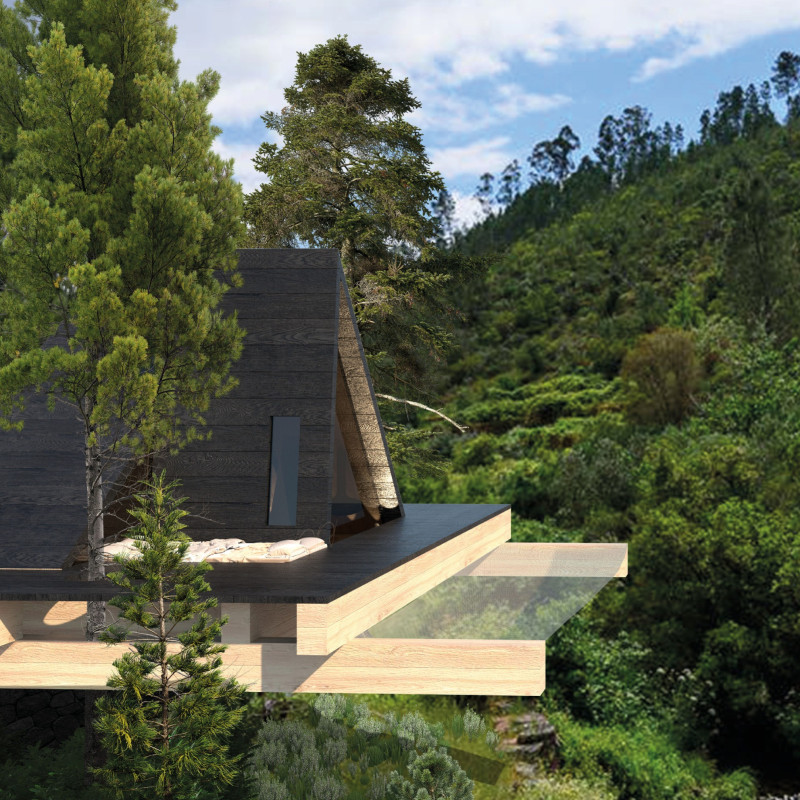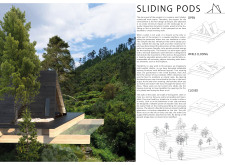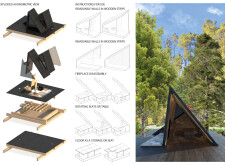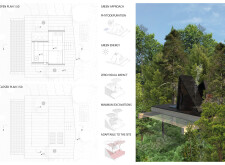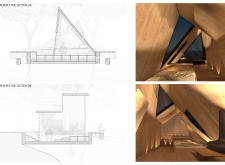5 key facts about this project
Functionally, the Sliding Pods are designed to address the needs of diverse occupants—be it for relaxation, social gatherings, or creative pursuits. The architecture emphasizes flexibility, allowing the interior spaces to adapt to different uses. The primary element of this adaptability is the innovative use of sliding roofs, which can be opened or closed based on user preference or climatic conditions. This design feature allows the cabin to transform from a cozy, enclosed retreat into an open-air space that invites the landscape inside, fostering a deeper interaction with nature.
The architectural layout is characterized by an open floor plan, which promotes fluidity between different areas. By eliminating traditional barriers, the design encourages occupants to utilize the space in varied ways. The use of removable walls made from transparent materials enhances this experience, allowing for unobstructed views and abundant natural light to fill the interior. Additionally, built-in furniture that serves dual purposes contributes to the overall functionality and spatial efficiency of the design.
A significant aspect of the Sliding Pods project is its commitment to sustainable practices. The selection of materials underscores this ethos; primarily, the use of wood not only adds warmth but also minimizes the environmental impact. The incorporation of transparent fabrics for the walls and strategically placed glass in the roofs maximizes natural light and maintains the connection to the outdoor environment, further blurring the boundaries between inside and outside. Additionally, the integration of solar panels underscores the project’s dedication to energy efficiency and a reduced carbon footprint.
One of the most notable elements of this architectural design is its minimal visual impact on the landscape. Careful consideration was given to the structure's form and materiality to ensure it harmonizes with its surroundings. The decision to maintain a zero excavation footprint exemplifies an understanding of ecological preservation, allowing the natural terrain and its vegetation to remain undisturbed. In this context, the Sliding Pods project does not merely occupy space; it respects and celebrates the beauty of the environment.
Overall, the Sliding Pods are an embodiment of modern architectural ideas that prioritize user experience, adaptability, and environmental consciousness. The innovative design approaches employed in this project present a model for future developments that seek to create harmonious relationships between structures and the landscapes they inhabit. For those interested in exploring architectural plans, sections, and detailed designs that illuminate the project's various elements, the full presentation of the Sliding Pods project offers valuable insights into its unique architectural ideas.


